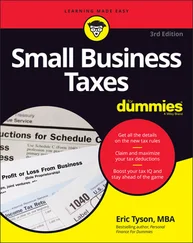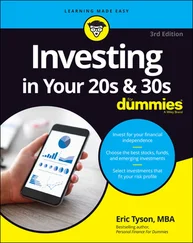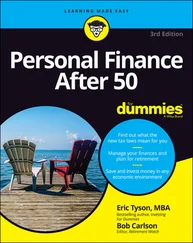Interest you receive from bank accounts and corporate bonds is generally taxable. U.S. Treasury bonds pay interest that’s state-tax-free. Municipal bonds, which state and local governments issue, pay interest that’s federal-tax-free and also state-tax-free to residents in the state where the bond is issued. (I discuss bonds in Chapter 7.)
Taxation on your capital gains, which is the profit (sales minus purchase price) on an investment, works under a unique system. Investments held less than one year generate short-term capital gains, which are taxed at your normal marginal rate. Profits from investments that you hold longer than 12 months are long-term capital gains. These long-term gains cap at 20 percent, which is the rate that applies for those in the highest federal income tax brackets. This 20 percent long-term capital gains tax rate actually kicks in (for tax year 2020) at $441,450 of taxable income for single taxpayers and at $496,600 for married couples filing jointly. The long-term capital gains tax rate is just 15 percent for everyone else, except for those in the two lowest income tax brackets of 10 and 12 percent. For these folks, the long-term capital gains tax rate is 0 percent.
To help pay for the Affordable Care Act (Obamacare), taxpayers with total taxable income above $200,000 (single return) or $250,000 (joint return) from any source are also subject to a 3.8 percent extra tax on the lesser of the following:
Their net investment income, such as interest, dividends, and capital gains; net investment income excludes distributions from qualified retirement plans
The amount, if any, by which their modified adjusted gross income (MAGI) exceeds the dollar thresholds; MAGI is adjusted gross income plus any tax-exempt interest income
 Use these strategies to reduce the taxes you pay on investments that are exposed to taxation:
Use these strategies to reduce the taxes you pay on investments that are exposed to taxation:
Opt for tax-free money markets and bonds. If you’re in a high enough tax bracket, you may find that you come out ahead with tax-free investments. Tax-free investments yield less than comparable investments that produce taxable earnings, but because of the tax differences, the earnings from tax-free investments can end up being greater than what taxable investments leave you with. In order to compare properly, subtract what you’ll pay in federal as well as state taxes from the taxable investment to see which investment nets you more.
Invest in tax-friendly stock funds. Mutual and exchange-traded funds that tend to trade less tend to produce lower capital gains distributions. For funds held outside tax-sheltered retirement accounts, this reduced trading effectively increases an investor’s total rate of return. Index funds invest in a relatively static portfolio of securities, such as stocks and bonds (this is also true of some exchange-traded funds). They don’t attempt to beat the market. Rather, they invest in the securities to mirror or match the performance of an underlying index, such as the Standard & Poor’s 500 (which I discuss in Chapter 5). Although index funds can’t beat the market, the typical actively managed fund doesn’t, either, and index funds have several advantages over actively managed funds. See Chapter 8to find out more about tax-friendly stock mutual funds, which includes some non-index funds, and exchange-traded funds.
Invest in small business and real estate. The growth in value of business and real estate assets isn’t taxed until you sell the asset. Even then, with investment real estate, you often can rollover the gain into another property as long as you comply with tax laws. However, the current income that small business and real estate assets produce is taxed as ordinary income.
 Short-term capital gains (investments held one year or less) are taxed at your ordinary income tax rate. This is another reason you shouldn’t trade your investments quickly (within 12 months).
Short-term capital gains (investments held one year or less) are taxed at your ordinary income tax rate. This is another reason you shouldn’t trade your investments quickly (within 12 months).
Choosing the Right Investment Mix
Diversifying your investments helps buffer your portfolio from being sunk by one or two poor performers. In the following sections, I explain how to mix up a great recipe of investments.
When you’re younger and have more years until you plan to use your money, you should keep larger amounts of your long-term investment money in growth (ownership) vehicles, such as stocks, real estate, and small business. As I discuss in Chapter 2, the attraction of these types of investments is the potential to really grow your money. The risk: The value of your portfolio can fall from time to time.
The younger you are, the more time your investments have to recover from a bad fall. In this respect, investments are a bit like people. If a 30-year-old and an 80-year-old both fall on a concrete sidewalk, odds are higher that the younger person will fully recover and the older person may not. Such falls sometimes disable older people.
 A long-held guiding principle says to subtract your age from 110 and invest the resulting number as a percentage of money to place in growth (ownership) investments. So if you’re 35 years old:
A long-held guiding principle says to subtract your age from 110 and invest the resulting number as a percentage of money to place in growth (ownership) investments. So if you’re 35 years old:

If you want to be more aggressive, subtract your age from 120:

Note that even retired people should still have a healthy chunk of their investment dollars in growth vehicles like stocks. A 70-year-old person may want to totally avoid risk, but doing so is generally a mistake. Such a person can live another two or three decades. If you live longer than anticipated, you can run out of money if it doesn’t continue to grow.
 These tips are only general guidelines and apply to money that you invest for the long term (ideally for ten years or more). For money that you need to use in the shorter term, such as within the next several years, more-aggressive growth investments aren’t appropriate. See Chapters 7and 8for short-term investment ideas.
These tips are only general guidelines and apply to money that you invest for the long term (ideally for ten years or more). For money that you need to use in the shorter term, such as within the next several years, more-aggressive growth investments aren’t appropriate. See Chapters 7and 8for short-term investment ideas.
Making the most of your investment options
No hard-and-fast rules dictate how to allocate the percentage that you’ve earmarked for growth among specific investments like stocks and real estate. Part of how you decide to allocate your investments depends on the types of investments that you want to focus on. As I discuss in Chapter 5, diversifying in stocks worldwide can be prudent as well as profitable.
Here are some general guidelines to keep in mind:
Take advantage of your retirement accounts. Unless you need accessible money for shorter-term non-retirement goals, why pass up the free extra returns from the tax benefits of retirement accounts?
Don’t pile your money into investments that have gained lots of attention. Many investors make this mistake, especially those who lack a thought-out plan to buy stocks. In Chapter 5, I provide numerous illustrations of the perils of buying attention-grabbing stocks.
Читать дальше

 Use these strategies to reduce the taxes you pay on investments that are exposed to taxation:
Use these strategies to reduce the taxes you pay on investments that are exposed to taxation: Short-term capital gains (investments held one year or less) are taxed at your ordinary income tax rate. This is another reason you shouldn’t trade your investments quickly (within 12 months).
Short-term capital gains (investments held one year or less) are taxed at your ordinary income tax rate. This is another reason you shouldn’t trade your investments quickly (within 12 months).












